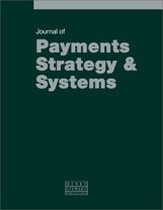Distributed ledger technologies and instant payment systems: The potential effects of substitution
Abstract
This paper explores how distributed ledger technology (DLT) can contribute to the instant payments market, discussing the potential impacts of the technology. The paper defines how the locus of control in DLT shifts from centralised system administrators to end users, while the locus of knowledge shifts from organisational to smart-contract programmers’ knowledge. The radical implementation of DLT is depicted as a single-layer network where intermediaries are eliminated from the payment cycle, while the conservative approach is described as the gradual application of some DLT components into existing ecosystems. Both designs are briefly discussed from the perspective of database centrality, technological literacy and quality assurance. The paper then compares DLT and instant payments schemes through the lens of standardisation, market adoption and platformisation. The paper shows that to be successful, both instant payment systems and DLT need to gain traction in the market, and that service fragmentation must be resolved by unifying the market. The paper ends by contrasting the various components of instant payment and DLT systems, and concluding that while DLT remains an evolving technology, instant payment systems will continue to play a more prominent role in the market.
The full article is available to subscribers to the journal.
Author's Biography
Austėja Šostakaitė is a senior economist at the Market Infrastructure Department of the Bank of Lithuania. She works on innovation and Fin-Tech in market infrastructures, and focuses on distributed ledger technologies. Austėja is interested in how new technologies can be applied to payment systems, and the potential impact of these technologies on the market and central bank activities.
